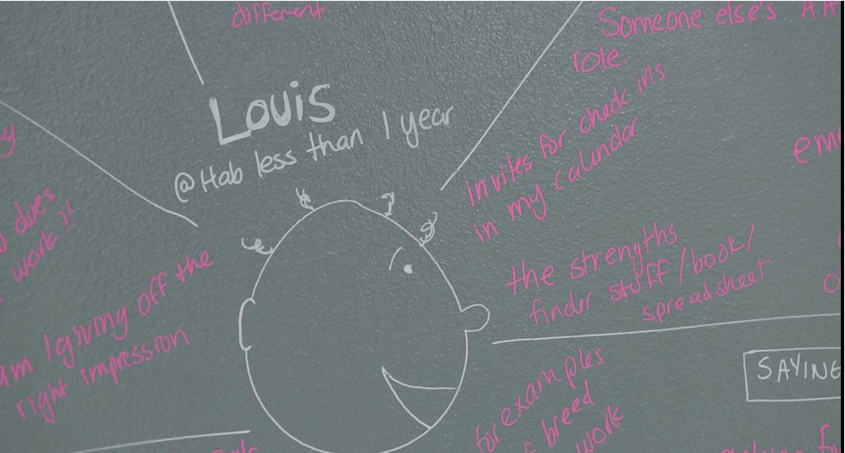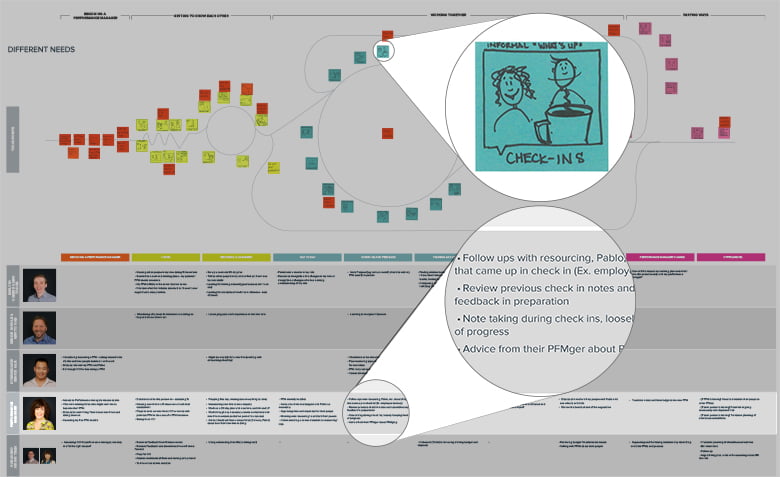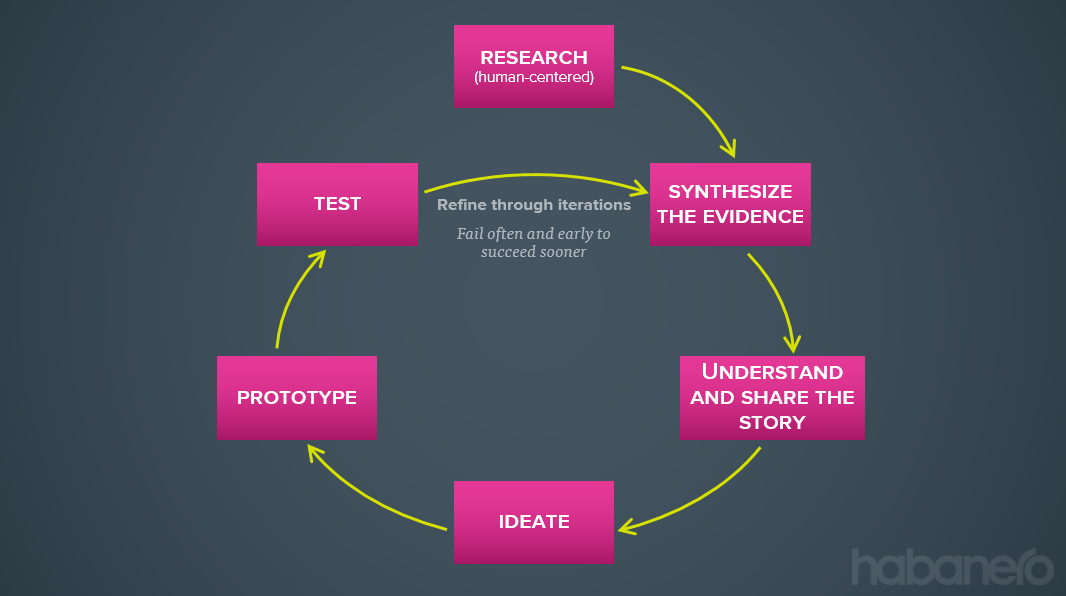What do you think about design thinking?
If you asked 100 people these statements, how many do you think would answer "true" to at least one of them?
- Design thinking is a cloudy, nebulous concept.
- Design thinking is an annoying, somewhat meaningless buzzword.
- Design thinking probably means something to designers, but it's not relevant to other people.
I’ve seen enough blank stares and experienced enough silences when this term is dropped to feel confident I could go out to any sidewalk near me and easily find someone to agree with at least one or all of those statements.
What is design thinking?
Design thinking is a way of describing the deliberate use of activities that give you the best chance of having a design that:
- Makes a difference – it’s not just about designing something, it’s about designing something that matters and has an impact
- Is viable – the design can be embraced by people because it fits into their lives and environments
I’m going to bet you’ve had the experience of being part of something that seems like a great idea, only to have it get shelved. This is probably especially true if you’re in a design role.
I’m also going to bet you have bits of knowledge that could help improve the things around you—whether it’s your kids’ school, communication in your office, a sales process, or the customer service at your favourite store.
That’s where design thinking comes into play. Design thinking is about tapping into the collective knowledge and pool of ideas of the people connected to an experience or issue and bringing the ones that are viable alive in a deliberate and disciplined way.
A bit of background
One of my first encounters with design thinking concepts was when I worked for international research organizations in the Philippines and Indonesia in my first jobs after university.
While I worked for relatively large international organizations, many of my friends worked for smaller, local organizations. So, I’d hear about how although large international development organizations often had big, healthy budgets to spend on projects, they sometimes missed the mark in making meaningful differences to people because they didn’t have a deep enough understanding of the people the projects were supposed to benefit.
Then I’d hear about how local organizations were often creating small, yet more meaningful outcomes with smaller budgets because they took more time to understand the people and problems, and were working alongside the beneficiaries to develop and evolve solutions.
Sound familiar? To me, this example captures a big part of the spirit of design thinking.
At Habanero, we use a design thinking mindset to design employee experiences, whether it’s digital workplaces, bringing values and culture to life, onboarding, or performance management. If you are interested in a bit of a deep dive into using design thinking for performance management, check out our video series.
So what can you use design thinking for?
I share the information above to show that design thinking concepts have been around for a long time and can be applied to everything from a piece of furniture to employee experiences to international development.
Put another way, design thinking is a mindset you can apply to anything you are designing that involves people, including organizations, systems, products, or services.
Anyone can have a design thinking mindset. If you've read this far, I bet you do too.
10 signs you have a design thinking mindset
1. You know the value of taking time to pause and define the ideal experience
If you have a design thinking mindset, you know the value of deliberately shaping experiences, whether it's a birthday party, a classroom, an office, or a consumer experience.You know that skipping the time to think about people’s experiences is—at best—a missed opportunity for a service, event, or product to be all it can be. At worst, you know you risk continuing to solve the wrong problem because no one has stopped to question if the way something has always been done still makes sense.
A friend of mine recently told me about creating a light, happy moment for kids at the funeral of her 93 year-old mother when they released dozens of balloons into the sky at the burial. She got the idea through discussions with her sisters during her mother’s last weeks about how they could avoid a somber situation for the kids.
That’s a perfect example of being able to use a design thinking concept of wondering about the people who will be affected by an experience and then deliberately shaping it for their benefit.
2. You know the value of understanding the perspective of the people you’re designing for (also known as empathy)
You know that if a tailor is going to design something to fit a person’s body they need someone’s height, waist, arm measurements, and more.
Similarly, you know that if you’re going to design a new performance management system, new ways of communicating, or any other process that depends on the behaviours of people, you have to understand and consider the needs, feelings, thoughts and perspectives of the people the system or process is going to effect.
At Habanero, one of our go-to exercises early on in an engagement is empathy mapping. This helps us learn more about the people who will be part of whatever change we're driving in an organization. Below is an example of an empathy map we have of a newer employee at Habanero we use to iterate on performance management for new hires.

There is also good context for this empathy map in our other Insights post about solving enterprise problems. We also have an empathy map template you can use to get started.
3. You appreciate the value and challenge in getting the science into social science
Getting reliable, meaningful, and relevant data about groups of human beings is important if you’re designing products, services, or experiences.
If you have a design thinking mindset, you probably appreciate the pursuit of reliable and relevant qualitative and quantitative data. You’d also appreciate the value and challenge in using methodologies like interviews, surveys, observation and ethnographic research, workshops and other ways of navigating the messy uniqueness of people to get to something truthful, relevant, and useful to guide your design.
Some of our clients get concerned about spending too much time doing research. It’s important to note that just because we are using the word “research” does not mean we are trying to get into peer-reviewed journals.
A good practitioner knows that some research is better than none, can choose the most valuable activities to conduct research on, and balances the amount of research done with scale of the problem being addressed.
4. You appreciate the sentiment in Einstein's quote
While you’d probably leave more than five minutes to think about solutions, you know getting crystal clear on what you're working to solve or change allows you to not be too narrow or broad in your focus.Taking the somewhat random example of furniture design, saying you want to design a chair is too narrow a focus and would caused missed design opportunities. You want to focus on what the true nature of the problem is, which is likely allowing people to rest or work in a comfortable position.
Similarly, if you’re looking to design or redesign things like performance management or communications, deeply understanding what the area is supposed to solve not only dramatically shortens the amount of time it takes you to identify solutions, it improves the quality of the solution.
5. You understand that while your role is important, it's not about you
Design thinking is really not about someone’s chance to be a superstar designer. It’s more about the chance to be a superstar facilitator, listener, or observer and ask good questions.
If you have a design thinking mindset, you know that while you likely have expertise to contribute, it’s less about your own ideas and more about eliciting and facilitating ideas from insightful and informed people closest to the problem. A big part of your role is creating a collaboration-friendly space for others to share and refine their ideas.
6. You also have a scout’s mindset
This is a concept I've only heard very recently through this TED Talk about why you think you're right, even if you're wrong.
A scout’s mindset is about being curious. And if you have a scout’s mindset, you feel intrigued instead of defensive when you come across something that contradicts what you think or expected. You also are less likely to associate changing your mind with weakness, because you know a new perspective is also a sign of being willing to test your assumptions and adapt to new information.
This kind of mindset is important to design thinking because it allows for new, innovative ideas to happen.
7. You know that while it's fun to design change, it’s not always easy to be on the receiving end of that change
If you follow activities related to design thinking, such as service design, you probably know that co-creation is important.
Why is co-creation so important? It’s partly because it supports facilitating and eliciting ideas from different people, but also because people are more likely to get on board with change if they have a say on what the change should do or how it will happen.
Many or most people will only half-heartedly follow an initiative if they aren’t truly convinced about the change taking place. Co-creation isn’t a silver bullet for successfully managing change, but it is a powerful way to help influence it.
8. You know the power of shared understanding
If you have a design thinking mindset, you know the challenges in using language to communicate complex ideas and problems to many people in a consistent way. You know pictures, models, and stories can often be much more powerful in creating a shared understanding that enables everyone to collaborate on problems together.
Below is a visual diagram illustrating our performance management at Habanero that includes information from empathy maps and illustrates the different components of the overall process. We placed copies of these on our walls so everyone could get an in-depth understanding of our process.

9. You know you need to surface the most promising ideas and then test them
There are so many ideas out there. Everyone has them. If you want to drown in ideas, that can be easily arranged. The challenge is in finding ideas that actually address what’s important and are viable.
Once you understand the people you're designing for, have a deep understanding of the problem, and there is a shared understanding of the people connected to the problem, it’s time to identify the ideas that are most promising.
From there, the best way to validate those promising ideas is to test them. If you're designing a piece of furniture, you get people to test a prototype. If you're changing performance management or improving your digital workplace, run pilots or release components that can test your ideas before over-investing in them.
10. You know the value of feedback loops
Finally, if you have a design thinking mindset, you know the best way to evolve and improve something is to continue to test and evolve things in the wild. “The wild” is the environment where the people you’re designing for are living and working.
If you’re new to being in a role that supports the design of something new, this is a good time to review sign number five about your role being important, but it not being about you. Good designers want to see their creations fail in testing so they can catch the things they weren’t clever enough to predict.
You could use feedback surveys, ongoing observation and monitoring, analytics; whatever makes the most sense in creating a way to learn and evolve what you are designing.





.jpeg?bc=white&la=en&mw=416&modified=20251202191043&hash=E64AA9DFFAE8D1AC27890831F714D5B0FA2FEBB2)

